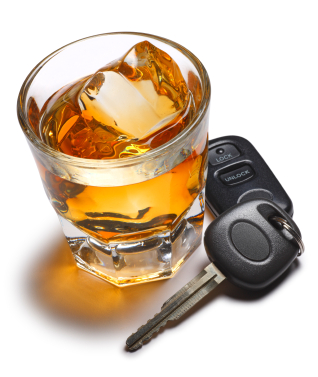As a Social Security Disability Attorney, representing Social Security Disability claimants from all over the State of Indiana from our Indianapolis offices, I am often asked why a Hoosier is not entitled to Social Security if they have not worked enough in the past ten years. This statement is always true but sometimes it may not be true. The key to this mystery is that there are two different types of Social Security for people who are disabled. The first type of Social Security is Title II Disability, sometimes referred to as SSDI. I do not like to refer to it as SSI because it can too easily be confused with SSI, which we will discuss in just a moment. The rules and regulations governing Title II Disability can be found in 20 CFR Part 404. CFR stands for Code of Federal Regulations. As part of this set of regulations, there can be found the requirement, that to be eligible for Title II Disability, the claimant must be have a disability that prevents them from working and is expected to last at least 12 months, AND the claimant must have worked for 20 out of the last 40 quarters. See 20 CFR Part 404.140 through 20 CFR Part 404.146. A quarter is one quarter of a year, so essentially you must have worked 5 out of the ten years immediately prior to the start of your disability to be eligible for Title II Disability.
The other type of disability, for those who are disabled, whose disability is expected to last more than a year AND have not worked 20 out of the last 40 quarters, is Title XVI Supplemental Security Income (SSI). The rules and regulations governing Title XVI SSI are found at 20 CFR Part 416. There are two essential differences between Title II and Tile XV!. The first is that the benefits payable under Title II Disability are based on your earnings history and are generally higher than those for Title XVI. The second is that there are quite a few restrictions and exclusions attached to Tile XVI SSI which are not attached to Title II Disability. A few examples of these differences include: If you are married, and your spouse is earning a substantial wage, your benefits for SSI are likely to be reduced to nothing, where as your spouse’s income is not counted at all against your Title II Disability payment. Another example is that if you are receiving SSI and someone pays your rent and for your food, those payments will reduce the amount of SSI payment you receive. However, with Title II Disability benefits will not decrease if someone else is paying your rent and food bills
Tip of the Day: If in doubt, when filing for benefits, file for both Title II Disability and Title XVI Supplemental Security Income. There is no penalty for doing so, and this will insure you receive the maximum benefits to which you are entitled.

 Drunk driving accidents are a scourge on the Hoosier state and the Country.
Drunk driving accidents are a scourge on the Hoosier state and the Country.  If you ever serve as a juror in Indiana and the case is a
If you ever serve as a juror in Indiana and the case is a  This is not true in a medical malpractice case. If the health care provider commits malpractice, but the injured patient is 1% at fault for his/her injuries, because they forgot to take a medication on one occasion, then that 1% fault means that the health care provider does not have to compensate the patient they injured even though the health care provider’s fault caused 99% of the harm. Now remember, medical malpractice does not mean the health care provider meant to do anything to cause the harm. Medical malpractice simply means that the health care provider failed to treat the patient the same way a reasonably careful doctor would treat the patient. You can liken this to a driver who fails to stop at a stop sign and causes an auto accident. The driver did not mean to ram the other car, they simply did not drive as a reasonably careful driver would drive, i.e. stopping at the stop sign.
This is not true in a medical malpractice case. If the health care provider commits malpractice, but the injured patient is 1% at fault for his/her injuries, because they forgot to take a medication on one occasion, then that 1% fault means that the health care provider does not have to compensate the patient they injured even though the health care provider’s fault caused 99% of the harm. Now remember, medical malpractice does not mean the health care provider meant to do anything to cause the harm. Medical malpractice simply means that the health care provider failed to treat the patient the same way a reasonably careful doctor would treat the patient. You can liken this to a driver who fails to stop at a stop sign and causes an auto accident. The driver did not mean to ram the other car, they simply did not drive as a reasonably careful driver would drive, i.e. stopping at the stop sign. Of the great inventions of our times, and there have been many, a precisely constructed child safety seat deserves recognition. It is a simple device to use. It is a simple device to make. It is a simple device to carry from place to place and it can even be transformed into a pumpkin seat. Yet in this simplicity is an element of safety that protects the apple of our eyes. I have a case right now involving a roll over crash. One person was suffered wrongful death and another endures an amputation as a result of the roll over. However, the 12 week old baby was left with nary a scratch. When the car stopped, on its roof, the car seat held baby fast, allowing the rescue personnel the opportunity to remove him from the wreckage.
Of the great inventions of our times, and there have been many, a precisely constructed child safety seat deserves recognition. It is a simple device to use. It is a simple device to make. It is a simple device to carry from place to place and it can even be transformed into a pumpkin seat. Yet in this simplicity is an element of safety that protects the apple of our eyes. I have a case right now involving a roll over crash. One person was suffered wrongful death and another endures an amputation as a result of the roll over. However, the 12 week old baby was left with nary a scratch. When the car stopped, on its roof, the car seat held baby fast, allowing the rescue personnel the opportunity to remove him from the wreckage.  As I was driving home, the other day, from our
As I was driving home, the other day, from our